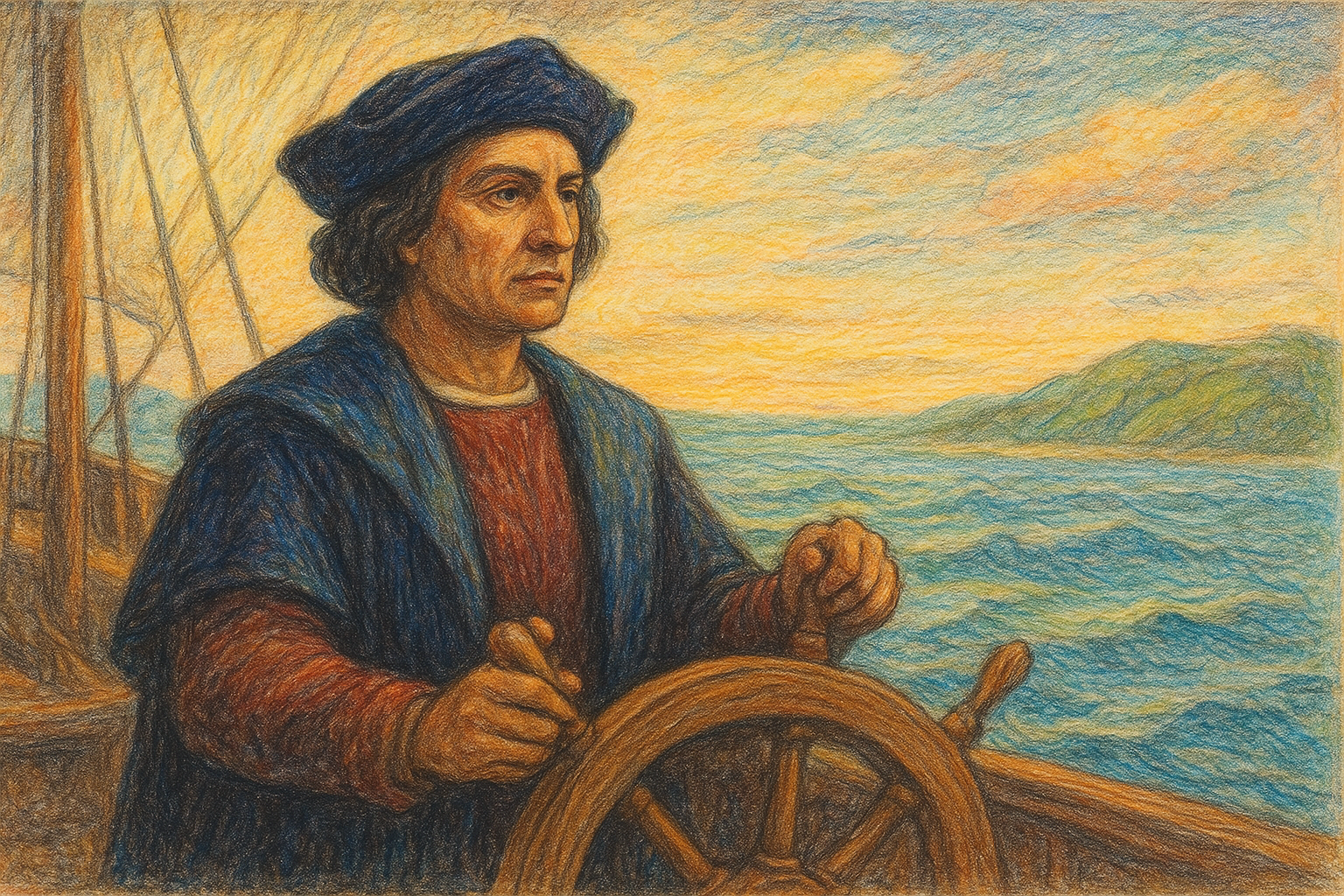In 1492, the voyage of Christopher Columbus—financed by the Spanish monarchs Ferdinand and Isabella—marked a decisive moment in world history, linking continents that had developed in isolation for millennia and initiating processes that would fundamentally transform societies, ecosystems, economies, and political orders on both sides of the Atlantic. To understand the significance of that voyage and the consequences of Columbus's choice to exploit indigenous peoples, it is necessary to place the event within the political, economic, technological, and intellectual context of late fifteenth-century Iberia and Europe, and then trace the consequences that followed in the Caribbean and beyond.
Europe in the late fifteenth century was newly consolidated and intensely competitive. The completion of the Reconquista in 1492 left the Spanish crowns eager to expand revenue streams, secure dynastic prestige, and propagate Christianity. Simultaneously, Ottoman control of eastern Mediterranean routes and the high cost of overland trade encouraged European rulers and merchants to seek alternative maritime routes to the wealthy markets of Asia. Advances in navigation, cartography, and ship design—improvements in the compass, portolan charts, the astrolabe's European adaptation, and the development of robust Atlantic-capable vessels like caravels—made long ocean voyages more feasible. Intellectual currents that prized exploration and commercial gain combined with missionary zeal to produce state-supported expeditions in search of spices, gold, and souls.
Columbus's proposal offered a westward maritime path to Asia, premised on a miscalculation of the Earth's circumference and on incomplete geographic knowledge. His fleet of three ships crossed the Atlantic and made landfall in the Caribbean on October 12, 1492. Columbus believed he had reached islands off Asia, a misunderstanding that shaped initial European expectations and subsequent naming conventions. What Columbus encountered instead was a mosaic of indigenous peoples with diverse political structures, economies, spiritualities, and lifeways. Rather than engage in sustained mutual accommodation or equitable exchange, Columbus and later Spanish actors imposed systems of extraction and domination. They seized land, established settlements, and instituted forced labor regimes that remade indigenous social and economic life.
The immediate human impact of Spanish colonization was catastrophic for native populations. European-introduced diseases—smallpox, influenza, measles, and others—to which indigenous peoples lacked immunity, spread rapidly and lethally, causing demographic collapse in many islands and continental regions. This biological catastrophe, combined with violent conquest, forced labor, displacement, and social disruption, decimated communities and undermined traditional institutions. The demographic collapse facilitated deeper European penetration and the reorganization of landholding and labor systems that prioritized extraction of wealth for European elites.
Columbus's voyages triggered the Columbian Exchange, a sweeping biocultural transfer that reshaped diets, economies, and environments worldwide. New World crops such as maize, potatoes, manioc, tomatoes, and various beans moved to Europe, Africa, and Asia, eventually raising agricultural yields and transforming cuisines and population growth in many regions. Old World domestic animals, cereal grains, sugarcane, and grapes were transplanted to the Americas, altering landscapes through grazing and plantation agriculture. The exchange also involved the movement of people—first through coerced labor systems applied to indigenous peoples, and then through the transatlantic slave trade, which would forcibly bring millions of Africans to the Americas to labor in mines and plantations, creating new demographic and cultural dynamics.
The economic consequences were profound. Precious metals extracted in the Americas fueled European bullion flows, stimulated mercantile and early capitalist ventures, and altered global trade balances. Colonies became sources of raw materials and profits that enriched European states and merchant classes, incentivizing further imperial expansion. The political consequences included the emergence of colonial administrations, legal doctrines to justify conquest and conversion, and diplomatic competition among European powers for territory and resources in the New World. Culturally, the encounter produced syncretic religious practices, hybrid artistic forms, linguistic change, and long-term shifts in identity—both among indigenous communities striving to survive and preserve traditions, and among settlers and enslaved populations forging new creole societies.
The legacy of Columbus's actions in the Caribbean is thus multifaceted: it inaugurated an era of transoceanic imperialism and global integration driven by unequal power relations; it precipitated one of the greatest demographic and cultural ruptures in human history; and it reshaped ecosystems and economies on a planetary scale. The ethical and historical assessments of Columbus and the early colonial period have evolved over time, moving from celebratory narratives of discovery and progress to critical accounts that foreground violence, dispossession, and resistance. The consequences of 1492 are still visible today in the social hierarchies, land distributions, cultural formations, and historical memories throughout the Americas and in Europe's imperial legacies.
